Last-Minute NYC Holiday Gift Guide 🎁
We’ve created a holiday gift guide with presents for the intrepid New Yorker that should arrive just in time—


One of New York City’s great hidden gems is the Chinese Scholars Garden in Snug Harbor Cultural Center and Botanical Garden. Snug Harbor as a whole is an expanse of great architectural finds, with stately buildings from the days it served as a haven for retired sailors, along with secret gardens and even a farm. You might find yourself distracted en route to the Scholars Garden and forget why you came, but that’s a good thing!
But the Chinese Scholars Garden is not to be missed. It’s one of only a few authentic classical outdoor Chinese gardens that were built in the United States. The materials, down to the rocks, tiles on the floor and the pavilions, were all made or sourced in China.
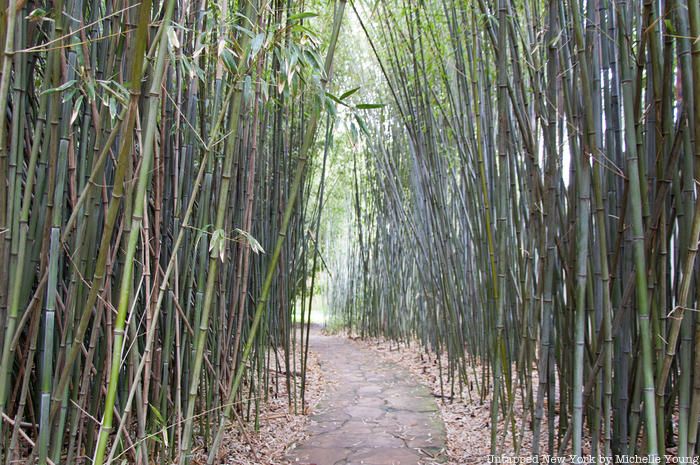
Entering off Cottage Row in Snug Harbor, you enter and exit through the gift shop, and walk down a narrow, winding path with towering bamboo to get to the Garden, which is not visible from the road. The exterior path is intended to offer a time of meditation before entering the Garden itself. The understated entrance functions simply as a portal to another world, designed with the purpose of attaining a harmonious balance for meditation and study.
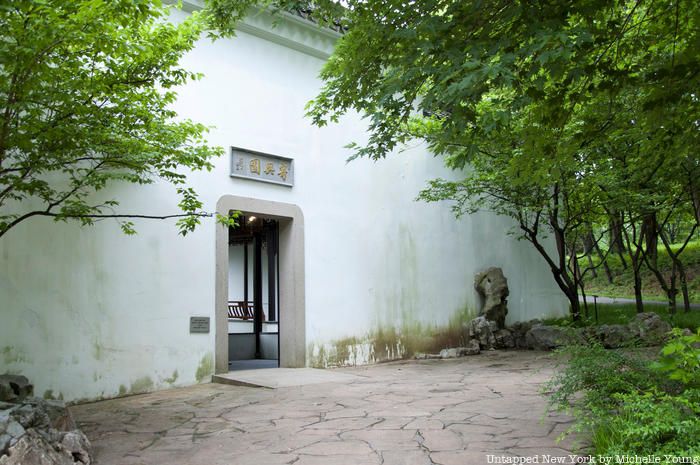
The design of the Chinese Scholars Garden is based on a series of actual gardens from the Ming Dynasty in China, dating between 1368-1644 AD. In total, there are eight pavilions, three ponds, a waterfall, and many picturesque points, with the design unfolding like a series of landscaped rooms.
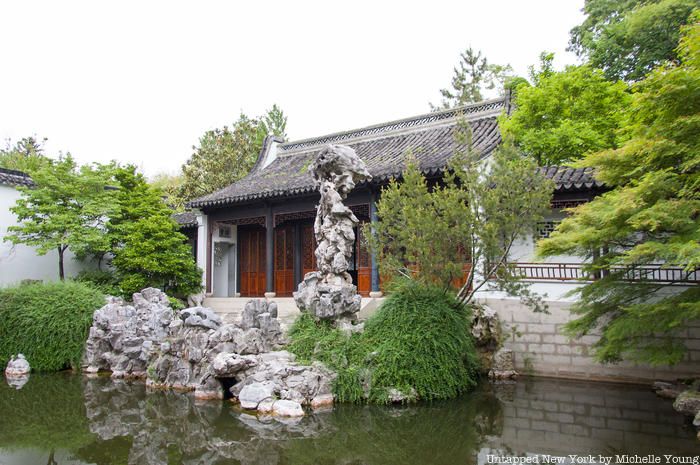
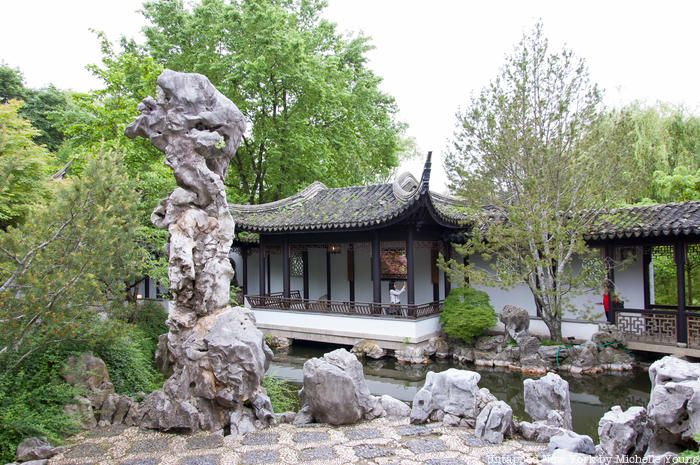
The highlight is perhaps the central courtyard, inside which is situated the largest of the pavilions which is designed for scholarly study. A 15-foot tall Ghongshi scholar rock formation is located in front of it along with a pond. (In practice here in New York, the pavilions get used for tai chi, meditation, and other events). On the opposite side, a covered walkway zig-zags to take you to other parts of the Garden.
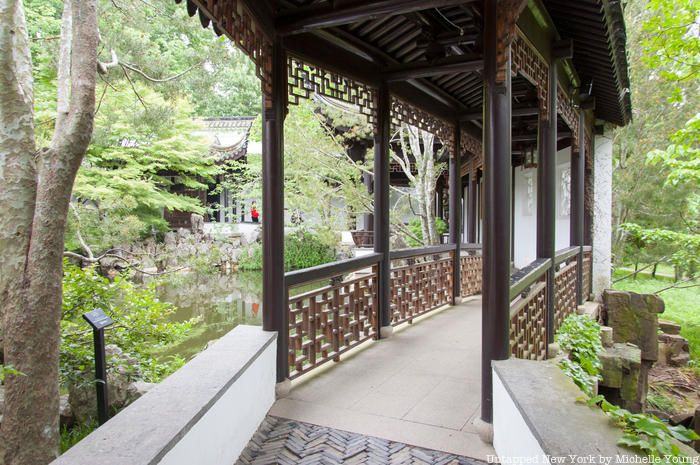
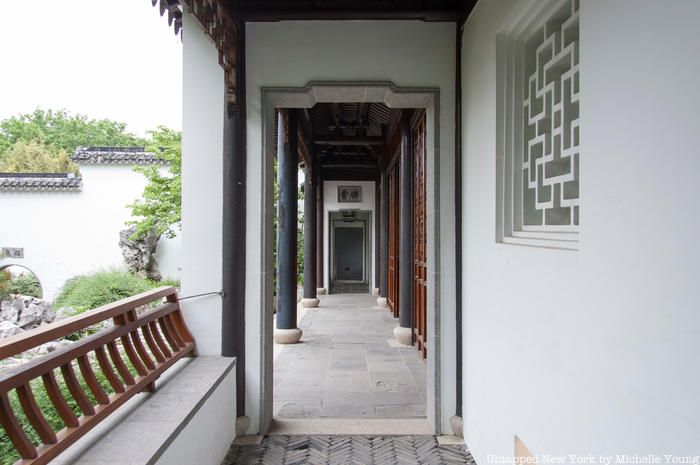
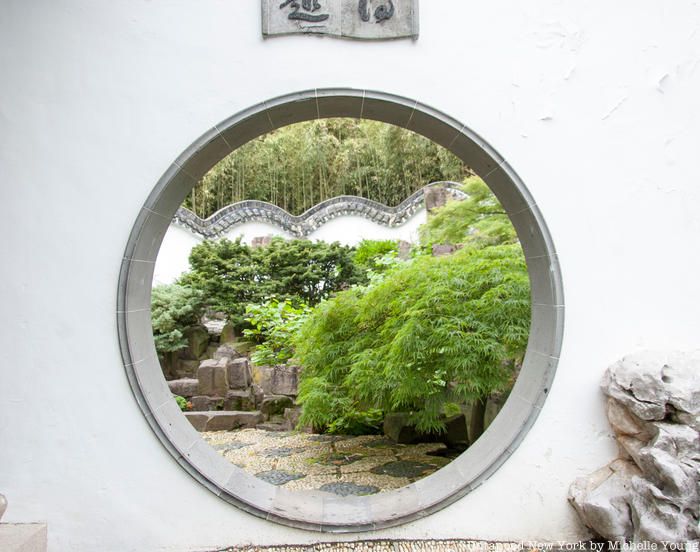
The secondary courtyard is even more serene, with the backdrop of the bamboo forest rising beyond the wall and the lush plantings which surround another pond. The rocks here have a very architectural quality, quite different from the more natural looking formations in the central courtyard.
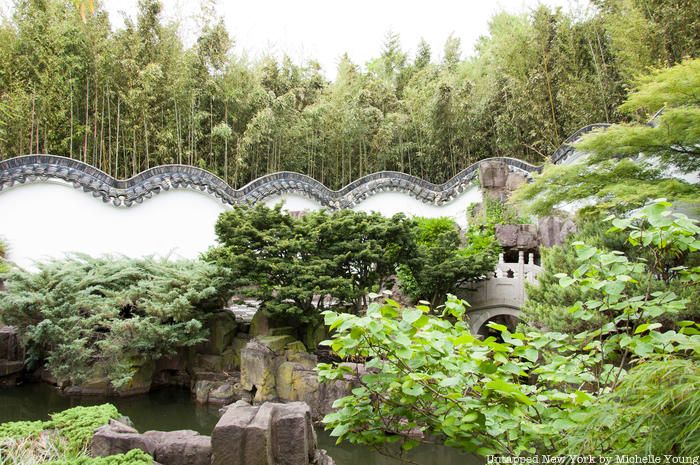
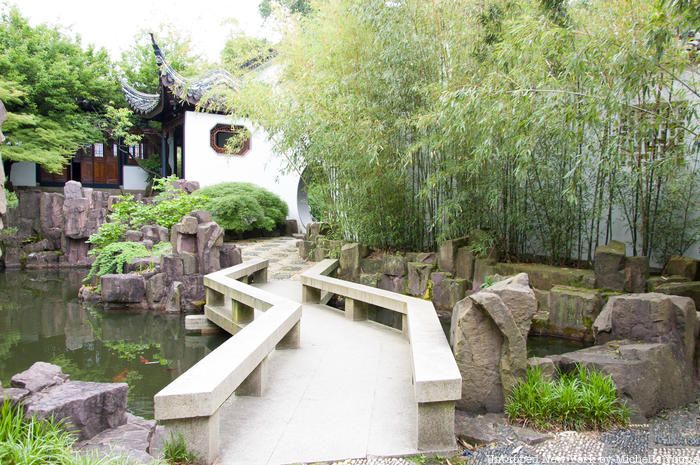
The effort to bring a Chinese garden to New York City began in 1984 on the initiative of Frances Paulo Huber, then the President of the Staten Island Botanical Garden. Zou Gongwu, a notable expert in Chinese gardens, was chief project engineer, and Snug Harbor worked with the Landscape Architecture Company of China to design the garden.
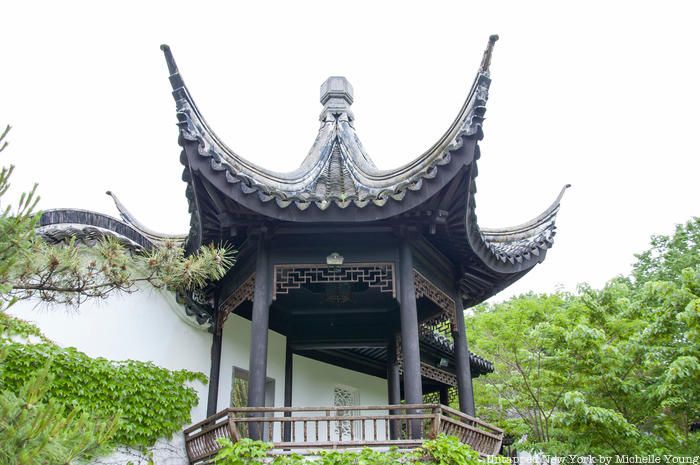
It took a year of constructing the materials in Suzhou, China with a team of forty craftsmen and artists, then an additional six months of installation at Snug Harbor. No glue or nails were used in the construction, as per Chinese tradition, but rather, a “sophisticated mortise-and-tenon system” was utilized, according to Snug Harbor.
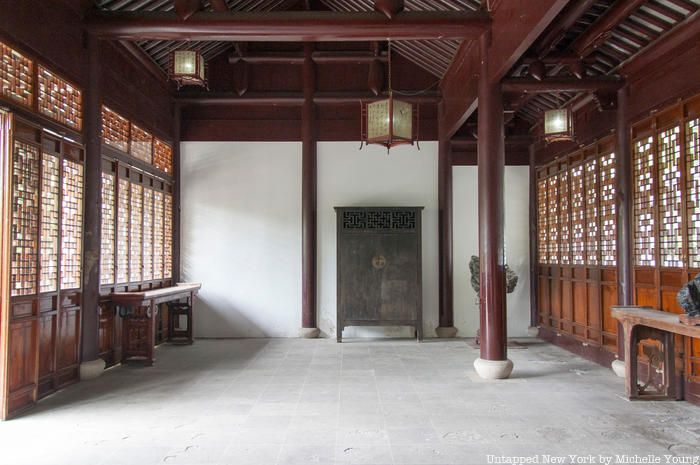
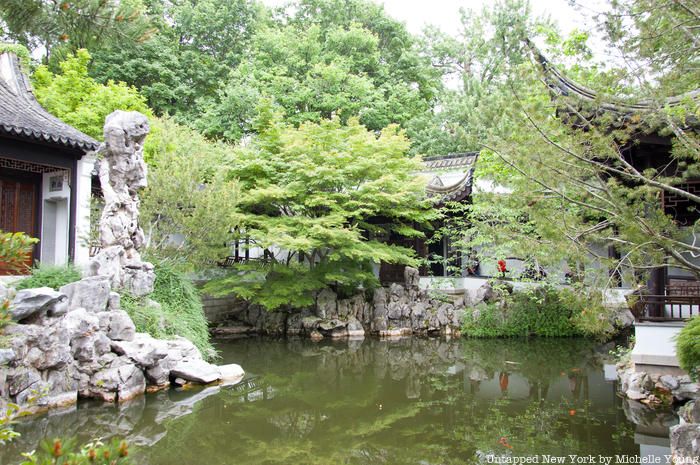
One design element, which is specific to the Chinese Scholars Garden, is the incorporation of American beer bottle shards in a mosaic in the upper pavilion! These glass pieces are combined with rice bowls from China, and the combination of the materials were intended by the craftsmen as a “symbol of harmony and unity between the two nations,” according to Snug Harbor.
We are working on a potential tour of the hidden gardens at Snug Harbor. Sign up for advance notice of this tour:
#mc_embed_signup{background:#fff; clear:left; font:14px Helvetica,Arial,sans-serif; }
/* Add your own Mailchimp form style overrides in your site stylesheet or in this style block.
We recommend moving this block and the preceding CSS link to the HEAD of your HTML file. */
(function($) {window.fnames = new Array(); window.ftypes = new Array();fnames[0]=’EMAIL’;ftypes[0]=’email’;fnames[3]=’ADDRESS’;ftypes[3]=’address’;fnames[4]=’PHONE’;ftypes[4]=’phone’;}(jQuery));var $mcj = jQuery.noConflict(true);
Subscribe to our newsletter